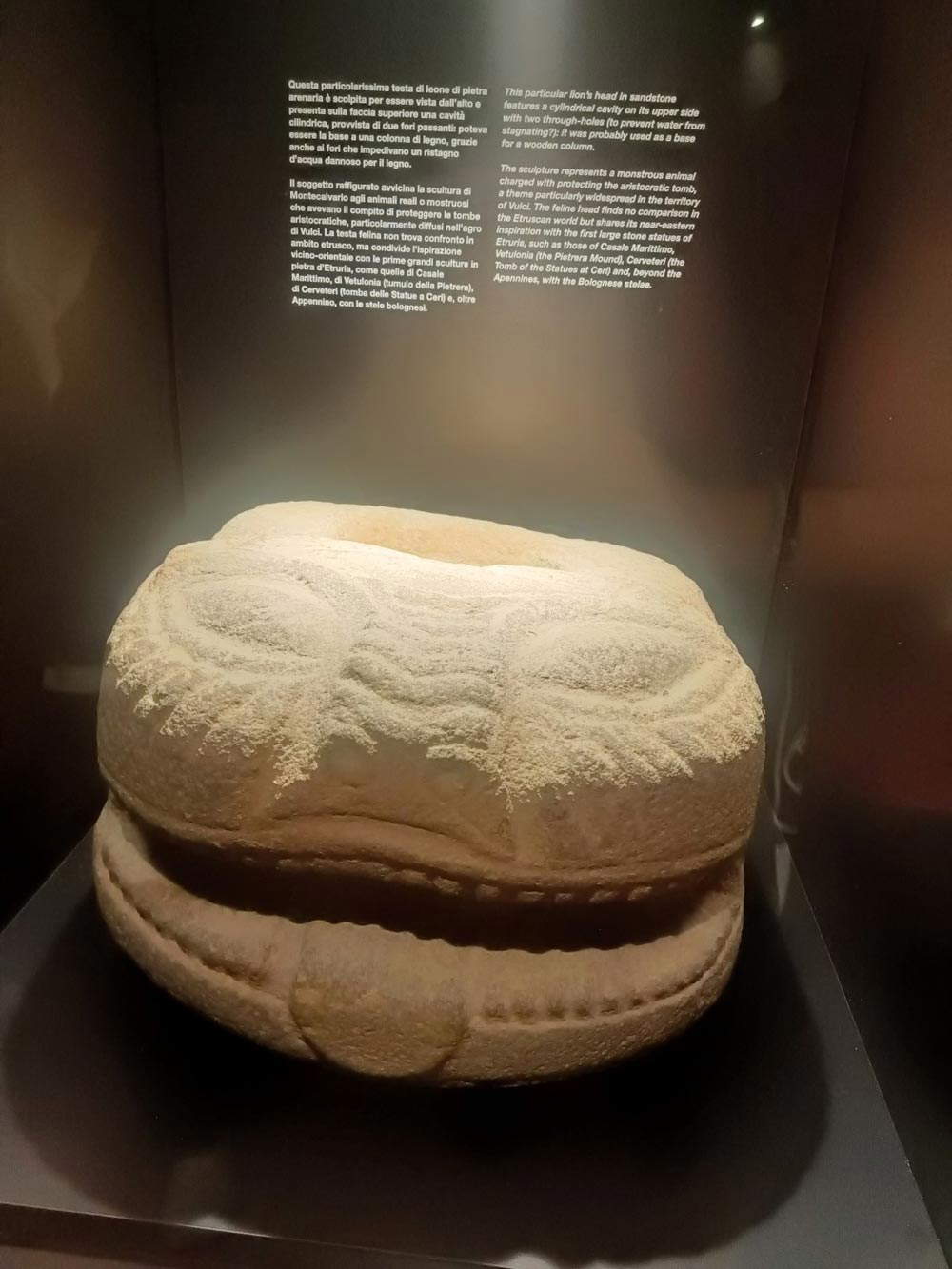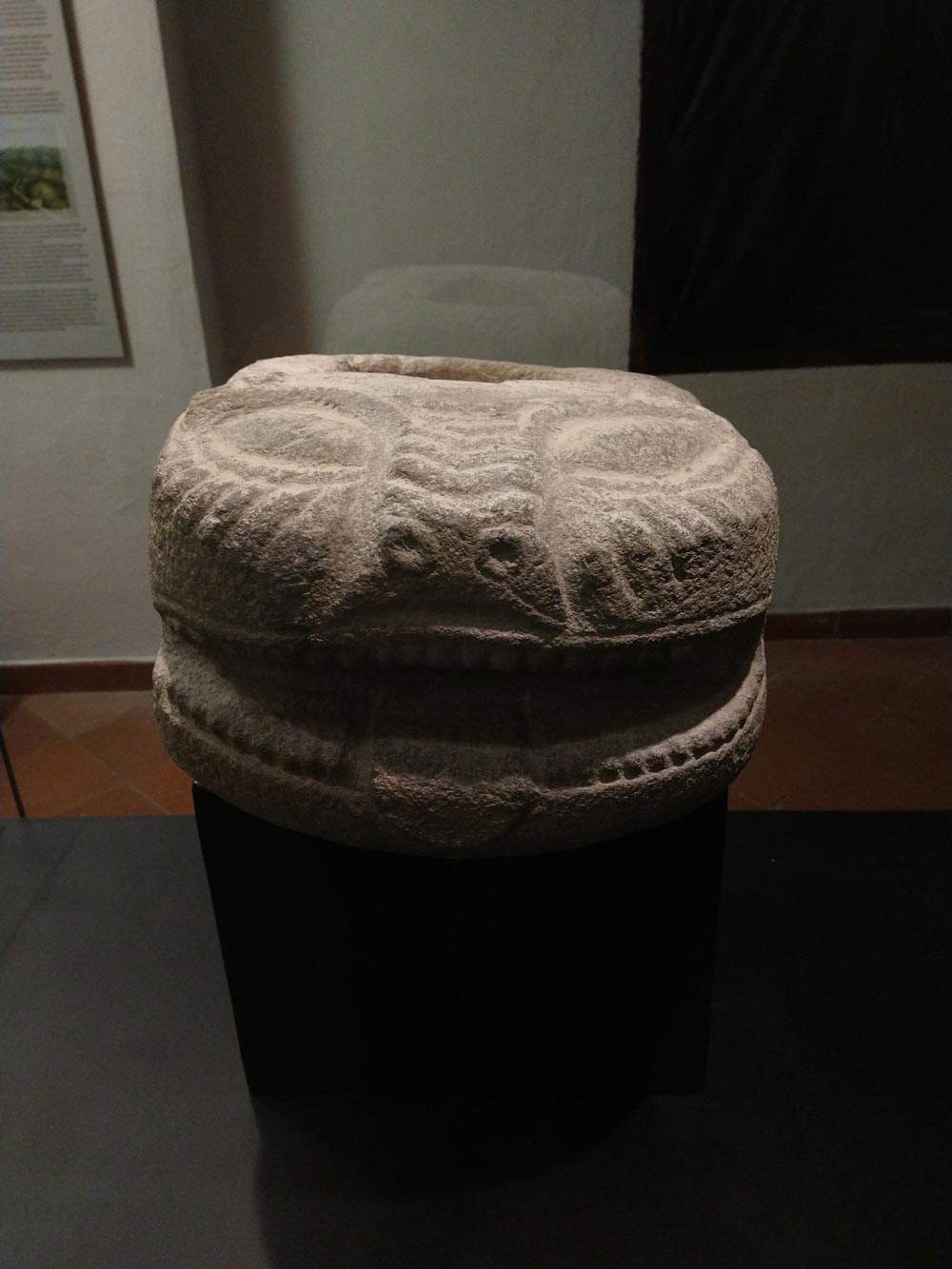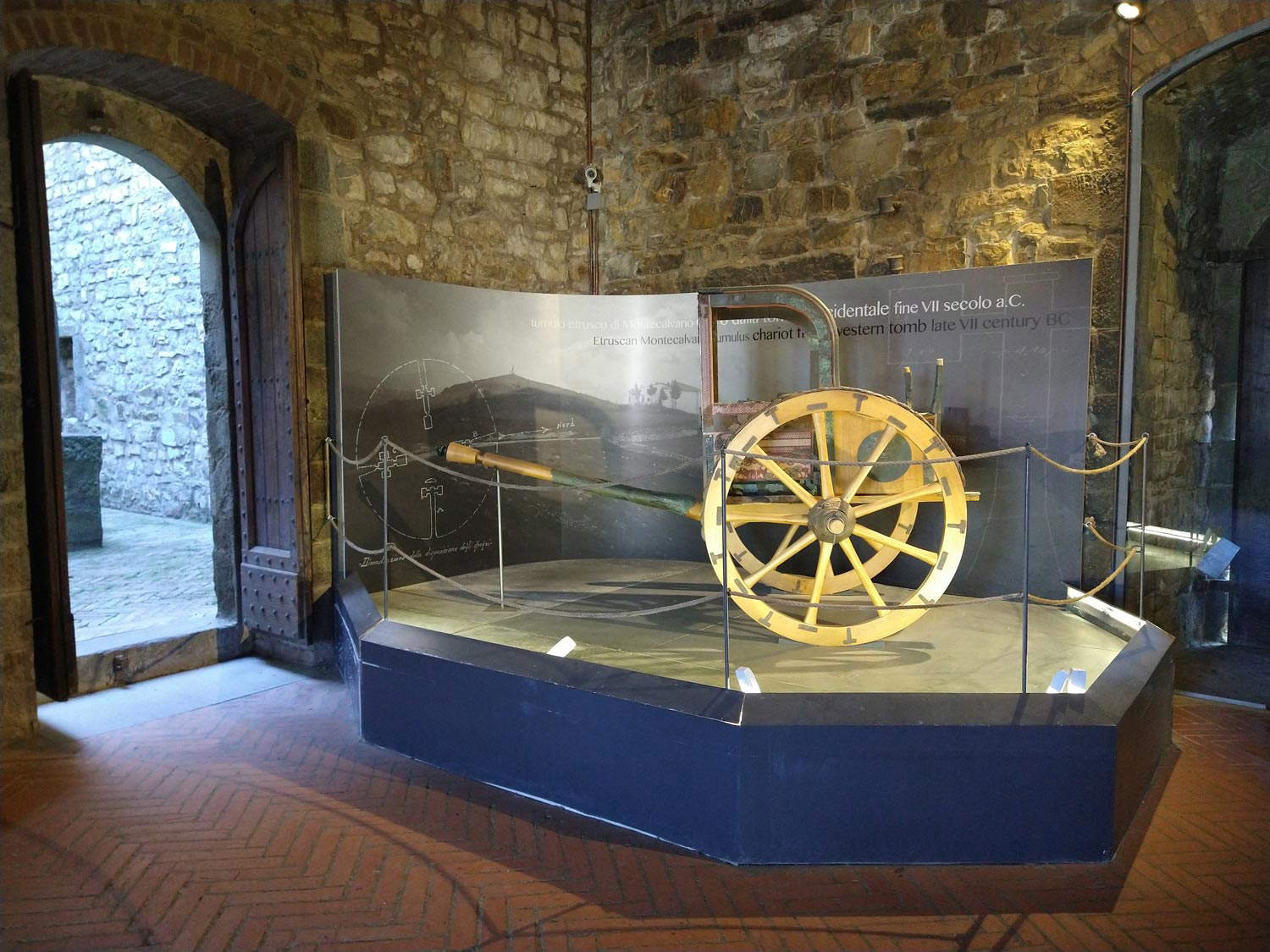One of Tuscany’s most interesting archaeological museums , the Archaeological Museum of Chianti in Castellina in Chianti, is changing its face: opened in 2006 in the beautiful village in the province of Siena, the museum illustrates the ancient history of the Chianti area through artifacts, especially from the Etruscan period, found in necropolis and archaeological sites in the area. Initially it was called “Archaeological Museum of the Chianti Senese,” then the adjective related to the province disappeared to make the museum more suitable to represent the territory as a whole (Chianti Senese and Chianti Fiorentino). It is based in the heart of the village, inside the well-preserved medieval Rocca.
The layout that visitors could appreciate until a few days ago was still the original one: now, the museum’s director, Marco Firmati, and the superintendency’s archaeology officer, Maria Gabriella Carpentiero, have decided to update it with a new itinerary, which they have curated, and which has been supported by the Municipality of Castellina in Chianti and the Superintendency of Archaeology, Fine Arts and Landscape for the provinces of Siena, Grosseto and Arezzo with the contribution of the European Union through GAL Leader and the European Agricultural Fund for Rural Development.






The goal: to improve visiting conditions and better enhance the material on display, which consists of more than 200 artifacts including everyday objects, artwork, architectural fragments, jewelry and tools from throughout the Chianti area that tell the story of daily life in these parts thousands of years ago: ranging from the shepherds who two thousand years before Christ moved in search of pastures, to the Etruscan princes who left in the imposing Tumulus of Montecalvario and other rich burials (Fonterutoli, Malpensata, Poggione) the proud testimony of their power dating back to the period between the late 7th and 6th centuries BC.C. These finds are joined by two spearheads: the extraordinary Etruscan chariot, found in the Montecalvario Tumulus, covered with decorated bronze and iron foils and reconstructed with complex restoration work (and like any good reconstruction, the original parts and those that have been recreated instead are clearly visible), and the lion’s head in pietra serena (perhaps the base of a column) found in the same Tumulus and which has become the symbol of the Museum since its opening in 2006.
A visit to the Chianti Archaeological Museum also allows visitors to tour the rooms of the medieval Rocca, or keep of the Florentine fortification that dominates the town. The Rocca was built beginning in 1401 on the remains of earlier structures destroyed by the Sienese and their allies when they successfully besieged the enemy outpost in 1397. And today the tour route includes the median walkway and the top of the tower, from which it is possible to observe a breathtaking panorama: from Valdelsa and San Gimignano to the Chianti Mountains and Pratomagno to the Amiata and Cetona Mountains.

 The
The The
The The
The The layout of
The layout of“The Archaeological Museum of Chianti,” explains Marcello Bonechi, mayor of Castellina in Chianti, “has been renovated in the spaces and display cases that house the many artifacts arriving from all over the area to enhance the historical and cultural heritage of Chianti and make it accessible to all visitors. This is also joined by new lighting that is attentive to energy conservation. The restyling work also allowed the two most important artifacts that identify the Museum, the Etruscan chariot and the lion’s head found in the Montecalvario Tumulus, to be given a new arrangement, placing them within the exhibition itinerary and enhancing their beauty. All this was made possible thanks to the European resources received through GAL Leader and the collaboration of the Soprintendenza Archeologia Belle Arti e Paesaggio for the provinces of Siena, Grosseto and Arezzo, the museum director, Marco Firmati, the Salingolpe Archaeological Group and the Fondazione Musei Senesi. To all of them goes our heartfelt thanks for their work.”
“The new exhibition itinerary,” adds Marco Firmati, director of the Archaeological Museum of Chianti, “is designed to offer all visitors the opportunity to take a journey through the most ancient history of this territory in a clear and conscious way. With this in mind, we have set up new display cases to give breathing space and visibility to the archaeological materials, and we have renewed the lighting, graphic and didactic apparatus of the Museum. The result is a significant improvement of the visit in terms of accessibility, communication of contents and overall enjoyment of the cultural offer, which revolves around the exceptional find of the Etruscan chariot dating back to the 7th-6th centuries B.C. and its new location, which is more protected and able to make the visitor relive the history of the period.”
The Chianti Archaeological Museum is open daily from March 1 to Oct. 31 and during the holiday season from 10 a.m. to 6 p.m. For information, you can call 0577-742090 and e-mail info@museoarcheologicochianti.it. Tickets cost 5 euros(full) and 3 euros(reduced) for over 65, university students and children 7-14 years old. There are also reductions for groups of 15 or more (2 euros) and for compulsory school students (1 euro) and free admission for children 0-6 years old, individuals with disabilities certified disability, tour guides with badges, ICOM card holders, MiC employees, accompanying schoolchildren and groups, pupils of schools of all levels in the municipalities of the Sienese Chianti region (Castellina in Chianti, Gaiole in Chianti, Radda in Chianti, Castelnuovo Berardenga) and Monteriggioni, and residents of the Sienese Chianti municipalities.
 |
| The Archaeological Museum of Chianti gets a makeover. Here is the new layout |
Warning: the translation into English of the original Italian article was created using automatic tools. We undertake to review all articles, but we do not guarantee the total absence of inaccuracies in the translation due to the program. You can find the original by clicking on the ITA button. If you find any mistake,please contact us.